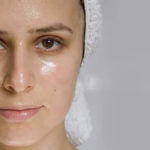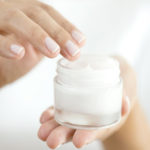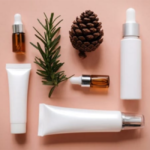For absolute skin care and protection, in addition to skin care routines such as makeup removal, facial cleansing, and moisturizing, don’t forget to apply a layer of sunscreen when going out to protect your skin from the sun and external environmental factors. Not to mention, pollution and the greenhouse effect are at alarming levels nowadays, and without proper protection, your skin may suffer from premature aging and acne breakouts. This is why sunscreen has become an essential item in every woman’s handbag.
There are countless sunscreen brands on the market, each with its unique features, packaging, and price range, leaving consumers confused about which one to choose. Worry not, as the information provided below will help you make an informed decision.
1 Pay Attention to the Indicators
SPF

SPF stands for Sun Protection Factor and indicates the level of protection against UVB rays, which cause sunburn and skin cancer. The SPF value in sunscreens typically ranges from 15 to 100, with each SPF unit providing protection for approximately 10 minutes. To determine the duration of effectiveness, multiply the SPF value by 10.
For example: SPF 20 x 10 = 200 minutes of effective protection. However, this duration may vary depending on environmental factors and individual skin characteristics. For daily use, an SPF of 30 to 50 is generally sufficient.
You may consider a sunscreen with an SPF of up to 70, such as the
If you plan to be directly exposed to the sun, such as during a beach trip or swimming, opt for a sunscreen with an SPF higher than 50 for enhanced protection.
To learn more about SPF, visit:
PA

While SPF protects against UVB rays, PA is effective against UVA rays. PA stands for Protection Grade of UVA, and products currently offer three common levels:
PA+: Offers double the protection against UVA rays, shielding the skin by approximately 40% – 50%.
PA++: Provides four times the protection and safeguards the skin by up to 60% – 70%.
PA+++: Delivers eight times the protection and defends the skin against up to 90% of UVA rays.
To ensure comprehensive sun protection, opt for a sunscreen that includes both SPF and PA values. While most products feature SPF, not all of them contain PA. Look for labels such as UVA/UVB, UV A/B, or Broad Spectrum to indicate the presence of PA.
2 Types of Sunscreen
Apart from the traditional cream formulation, there are various types of sunscreens available today, including spray, gel-cream, and milk formulations, to cater to diverse consumer needs. However, they can be broadly categorized into two main types: physical and chemical sunscreens.

Physical Sunscreen
Physical sunscreens primarily contain Zinc Oxide and Titanium Dioxide, creating a protective barrier on the skin that reflects UV rays and prevents their penetration. This layer is gentle on the skin, non-irritating, and long-lasting. However, it may feel heavy and lead to oiliness.
To learn more about physical sunscreens, visit:
Chemical Sunscreen
Chemical sunscreens act as a chemical filter on the skin, absorbing and breaking down UV rays before they can harm the skin. Key ingredients include avobenzone, oxybenzone, and sulisobenzone. The advantage of chemical sunscreens is their quick absorption without leaving a greasy or oily residue. However, their protective effect lasts only about 2 hours, requiring reapplication before sun exposure.
To distinguish between these two types, refer to:
3 Choosing the Right Sunscreen for Your Skin Type
To ensure optimal skin protection, it’s essential to consider not only the indicators and ingredients listed on the packaging but also your skin type.
Sunscreen for Sensitive Skin

Sensitive skin is considered one of the most “demanding” skin types due to its specific requirements regarding ingredients, formulations, fragrances, and brands. If you have sensitive skin, it’s best to avoid chemical sunscreens, as they often contain Oxybenzone and PABA, which are known allergens.
Explore some recommended sunscreens for sensitive skin at:
Sunscreen for Oily Skin
Oily skin is incompatible with thick, heavy creams, as they tend to clog pores and cause an uneven appearance. If you have oily skin, look for products labeled “No Sebum” or “Oil Free,” or opt for gel or spray formulations to prevent a greasy feel and facilitate quicker absorption.
Discover some suitable sunscreens for oily skin at:
Sunscreen for Dry Skin

Dry skin is prone to premature aging and the appearance of wrinkles when exposed to UV rays. To counteract this, choose sunscreens with moisturizing properties, and don’t forget to apply a layer of moisturizer before sunscreen for optimal protection.
Check out some popular sunscreens for dry skin at:
Sunscreen for Acne-Prone Skin

To protect acne-prone skin, select sunscreens labeled “Non-Comedogenic,” meaning they won’t clog pores. Steer clear of strongly fragranced products and those containing oxybenzone, alcohol, and PABA, as these are common ingredients in chemical sunscreens. Physical sunscreens are an excellent choice for acne-prone and congested skin.
Sunscreen for Combination Skin
According to surveys, over 80% of people in Vietnam have combination skin. You may experience oiliness in the T-zone and normal to dry skin in the U-zone, or vice versa.
Choosing the right sunscreen for combination skin can be tricky. If you opt for a highly moisturizing formula, the dry areas of your skin will benefit, but the oily areas may break out due to clogged pores. On the other hand, if you choose a sunscreen with strong oil control properties, the oily areas will remain comfortable, but the dry areas may feel tight and uncomfortable throughout the day.
Explore acne-specific products at:
Sunscreen is an indispensable companion in every woman’s skincare routine. With the information provided above, you can now confidently choose a suitable sunscreen that offers effective protection for your skin.




































